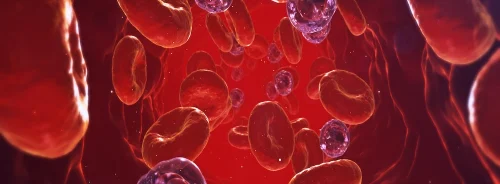For cardiac arrest patients, admission to a specialist heart centre rather than to the nearest general hospital is associated with improved chances of survival, according to a study reported in European Heart Journal. Researchers say that distance needed to travel to a specialist heart centre is not linked to better or worse risk of death.
See Also: Statins Before Cardiac Arrest Improve Survival Odds Afterwards
In addition, invasive diagnostic and treatment procedures – coronary angiography (CAG) and percutaneous coronary intervention (PCI) – were linked to a significant difference in survival, improving the chances of survival by 45 percent compared to patients who were not treated in this way. CAG and PCI can be performed in specialist heart centres.
As noted by lead author Dr. Tinne Tranberg, a cardiologist at Aarhus University Hospital in Denmark, the findings support the establishment of few, high-volume invasive heart centres to which patients should be transferred directly by the emergency medical services, regardless of the distance. "Centralisation, with fewer high-volume invasive heart centres, is an essential prerequisite for advanced post-resuscitation care. Furthermore, uniform and aggressive use of acute coronary angiography and percutaneous coronary intervention in cardiac arrest patients may translate into an even higher survival rate in the future," the author says.
Researchers analysed data from 41,186 patients who had suffered an "out-of-hospital cardiac arrest" between 2001 and 2013 in Denmark, making this the biggest study ever to investigate the associations between distance to invasive heart centres, performance of emergency CAG and PCI within six hours of the first contact with the healthcare system, and the level of care provided immediately after a cardiac arrest.
A total of 3,550 (9%) patients were still alive 30 days after suffering a cardiac arrest; 7,373 patients (29%) were admitted directly to an invasive heart centre, while the majority, 17,991, were admitted to a local hospital; 1,785 (21%) of patients who achieved a return of spontaneous circulation had CAG performed and 1,262 (15%) had PCI performed after CAG.
Compared with other cardiac arrest patients, admission directly to an invasive heart centre was associated with an 11% improvement in the chances of still being alive 30 days after the event, cardiopulmonary resuscitation (CPR) by a bystander was linked to a 10% improvement, and having the cardiac arrest when other people were around to witness it was linked to a 12% improvement in the chances of survival.
Overall survival 30 days after a cardiac arrest increased significantly over time: 5% in 2001 and 12% in 2013, with the largest increase being seen in patients who did not receive CPR from a bystander: 3% in 2001 and 10% in 2013. These changes could be due to improved emergency services skills and better in-hospital treatment, according to Dr Tranberg. "Importantly, our results indicate that the improvement in rates of cardiopulmonary resuscitation given by bystanders is not the only reason for improved survival following a cardiac arrest."
Source: European Society of Cardiology
Image Credit: Pixabay
Latest Articles
cardiac arrest, Specialist Centre, chances of survival
For cardiac arrest patients, admission to a specialist heart centre rather than to the nearest general hospital is associated with improved chances of survival, according to a study reported in European Heart Journal.










